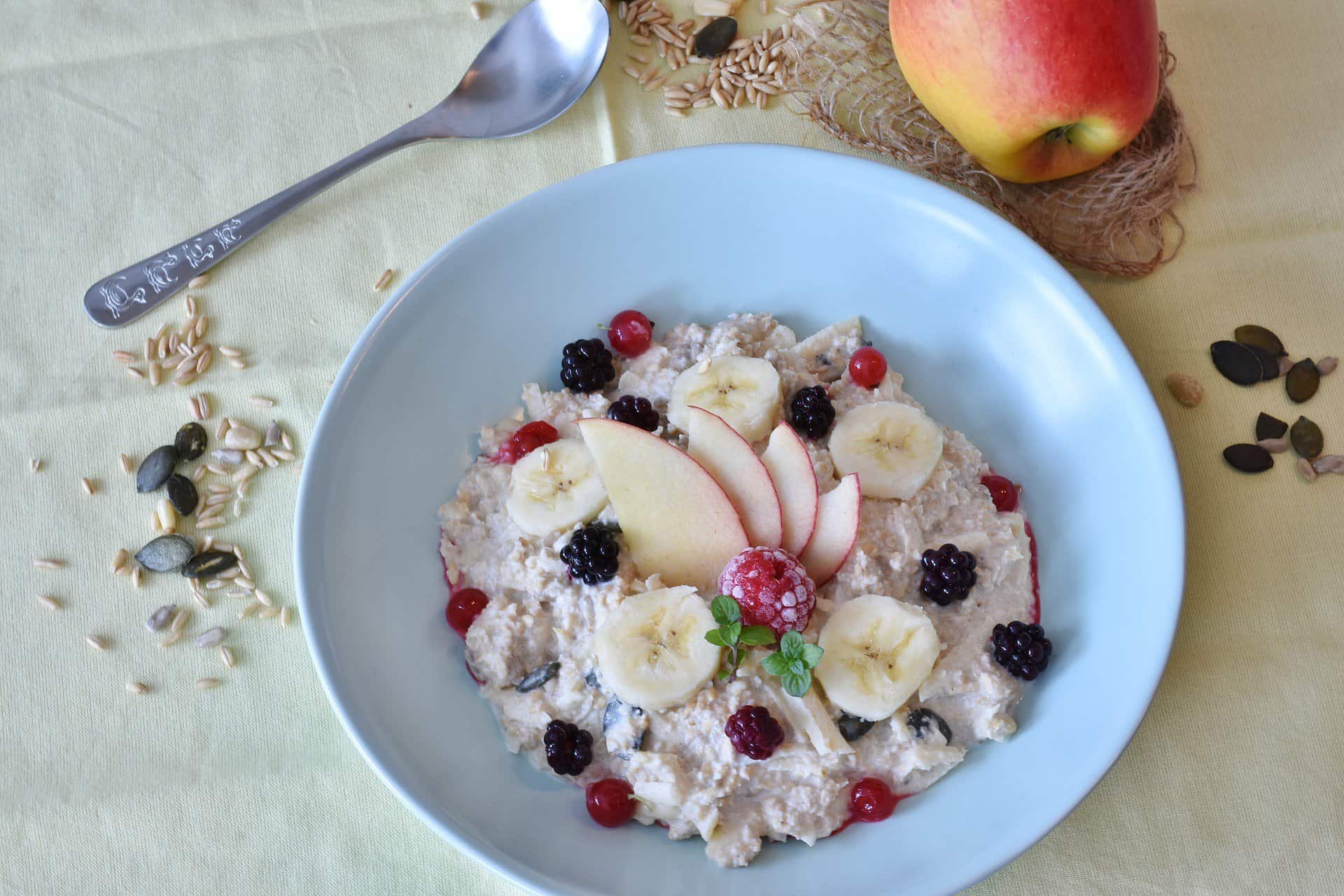How to Make the Perfect Porridge: 5 Simple Steps

Author: Devon Smolca, MS
As cooler weather starts to creep in, we often seek various ways to cozy up and get warm. Adding in more hot foods is a wonderful way to create an energetic balance for our bodies in the cold seasons. Imagine cradling a steamy bowl of porridge cupped in your hands…a hot breakfast can be magic for our mood on a frosty morning!
Whole grains are soothing, grounding, and comforting. They give us the satiety of sweet taste without skyrocketing our blood sugar. Evidence shows, especially when eaten at breakfast, that whole grains may even play a role in maintaining a stable blood sugar throughout the day. Whole grains are also an excellent source of B vitamins, fiber, and some minerals and they are oftentimes low in caloric density, so they won’t put a heavy dent in our calorie budgets. Research also shows that an increased intake of whole grains can reduce risks of cardiovascular disease and type II diabetes, and increased consumption can even boost metabolism.
So let’s dig into the elements needed to create the perfect porridge!
1. Choose a base
Most folks think of oatmeal when they picture porridge, but porridge has a broader definition. Porridge is really any hot cereal grain. Rolled or steel-cut oats are a great option if that’s most accessible, but adding variety to our diets can make things more interesting. Other great ideas for a whole grain bases are brown rice, buckwheat (including toasted buckwheat which goes by another name and taste, ‘kasha’), millet, or even quinoa! To make the nutrients in these grains even more available to our bodies, an extra step we can take is to soak the grains overnight, and then rinse them before cooking.
2. Add a liquid
For cooking most grains, the liquid to grain ratio is 2:1, but for porridge this really depends on personal preference. Some individuals insist on a more congealed, chunky porridge, while others prefer a consistency that is more creamy and light. For the latter, the ratio of liquid to grain gets increased closer to 3:1. Water would be the least calorie dense liquid to cook in, but to increase taste and creaminess, we can cook our porridge in milk instead of water or do a combination of both. Another lower-calorie option would be to cook the grain in water and add a splash of milk at the end. There are also endless options to try when it comes to milk, in order to keep our porridge from being dull. Cow’s milk is obviously a classic option, but goat’s milk can be delicious too. Some plant-based favorites are hemp, almond, coconut, soy, oat, cashew, and on and on!
3. Cook any way you like
Here comes the soothing part! Overnight oats are a wonderful thing to try when we are limited on time. This is when we soak our oatmeal overnight and have instant breakfast in the morning. Yet there’s nothing like having a steamy pot of fresh, hot porridge to start the day. For most grains, bring the pot with the liquid and grain to a boil, and then turn the heat down to low until the desired consistency is reached. Some grains take longer than others. The quickest cooking grains tend to be buckwheat and oats. And for a super on-the-go, lightening-fast porridge option, quick-cooking oats work like a charm. While we all tend to be busy in the morning and breakfast can be a challenge for many, even doing this ritual once a week on a chilly weekend day/day off can be so soothing and satisfying.
4. Have fun with topping
Most of the extra topping options are in the form of healthy fats. While healthy fats are necessary for a well rounded diet, if weight loss is a goal, it’s important to practice a bit more moderation with these add-ons due to their higher caloric density. Nuts, seeds and nut butters (peanut butter, almond butter, etc) are delicious toppings that add some texture and interest to porridge. For added creaminess, a dollop of your favorite healthy fat like butter, coconut oil, or ghee can be super nourishing especially if you live in a region with dry winter months.
5. Spice it up
For us, porridge is not complete without cinnamon! And there are other warming spices that can add variety to your bowl, including ginger, cardamon, nutmeg, or an all-encompassing pumpkin pie spice mix. These are wonderful options to mix and match, depending on taste.
Optional: Sweeten to taste
For most, a sweet breakfast tends to be more satisfying. There are lots of ways we can add a little sweetness to our morning. It’s important to be a bit mindful of portions with these because depending on the sweetener, this addition can take your porridge from a green zone food to red.Cooked fruit is one of the healthiest ways to add sweet. Tossing in some apples or pears while your porridge cooks is one example, and stirring in berries, bananas, or dried fruits once you’re ready to serve it up are other options. For some, this simple addition of fruit is enough. But if you have a sweet tooth and that doesn’t quite cut it, there are many options for sweeteners that can be added. Some great low glycemic sweeteners are coconut sugar, stevia, or xylitol. And there’s always the classics: honey, maple syrup, or brown sugar!
So let’s go forth and be courageous with our porridge! No need for bland bowls or processed, sugar-laden cereals. Let’s allow the simplicity of this traditional food to comfort and nurture us, so we may have the internal resources to comfort and nurture those around us.

